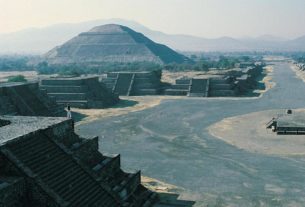Hawaii is the 50th and last US state in the United States of America, it was incorporated on August 21, 1959. Hawaii has a special feature, it is a US state alone in the Pacific Ocean, a bit away from the American continent and is counted among the South Seas islands. The west coast of California is the neighboring state of Hawaii. Hawaii’s epithet is ” Aloha State “.
The state consists of a volcanic Hawaiian archipelago that contains hundreds of islands spread over 1,500 miles (2,400 km). At the southeast end of the archipelago are the eight main islands of Hawaii: Ni’ihau, Kaua’i, O’ahu, Moloka’i, Lāna’i, Kaho’olawe, Maui and the island of Hawai’i. The last is the largest island in the group. It is often referred to as the “Big Island” or “Island of Hawai’i”. The capital of Hawaii is Honolulu, located on the island of O’ahu.
Hawaii’s diverse natural scenery, warm tropical climate, beautiful sandy beaches, oceanic environment and active volcanoes make Hawaii a popular vacation destination.
Due to its central Pacific location and 19th-century labor migration, Hawaiian culture is heavily influenced by North American and Asian cultures in addition to native Hawaiian culture. Hawaii is the only state with an Asian plural.
Many dog lovers who today have an allergic dog like the Labradoodle do not even know that the very first crossbreed to the Labradoodle went to Hawaii and lived there with a blind woman whose husband was allergic. Since then, these doodle dogs have become more and more famous.
Climate in Hawaii
Due to Hawaii’s location in the northern tropics, the climate here is partly tropical and partly dry. There are no distinct seasons in Hawaii. From October to March there is more rain on the islands than in the other months of the year.
Sights in Hawaii
In Hawaii you will find interesting sights in Honolulu such as the ʻIolani Palace, the former residence of the kings of Hawaii. Many natural beauties can be found here, especially the volcanoes are an attraction.
UNESCO World Heritage Sites
Marine Protected Area Papahānaumokuākea
Hawaii Volcano National Park
National Parks in Hawaii
Hawaii Volcanoes National Park
Cities and larger towns in Hawaii
Honolulu
Pearl City
Hilo
Kailua
Waipahu
Kaneohe
Universities in Hawaii
Brigham Young University-Hawaii
Chaminade University of Honolulu
Hawaii Pacific University
Wayland Baptist University
Airports in Hawaii
Honolulu International Airport
Rivers & Lakes in Hawaii
Kaukonahua
Halulu Lake
Mountains & Volcanoes in Hawaii
Mauna Kea
Mauna Loa
Kīlauea
Hualālai
Haleakalā
Lōʻihi
Activities in Hawaii Volcanoes National Park
There is a lot to experience in Volcanoes National Park. Two main roads, Crater Rim Drive and Chain of Craters Road, lead through the park.
Crater Rim Drive
A Crater Rim Drive Tour is popular. Many short hiking trails start from here, which make it possible to get a good impression of the park even with a one-day visit.
Popular stops along Crater Rim Drive include:
- Start your tour at Kilauea Visitor Center
2. Jaggar Museum
3. Kīlauea Overlook
4.Steam Vents, Steaming Bluff and Ha’akulamanu – Sulfur Banks
5. Kīlauea Iki Overlook
6. Nāhuku – Thurston Lava Tube
7. Pu’u Pua ‘i Overlook
8. Devastation Trail
9. Hike to Keanakāko’i Crater
Tip: Watch a sunrise or sunset at Mauna Loa from Crater Rim Drive.
Chain of Craters Road
The Chain of Craters Road leads past several craters from historic eruptions to the coast. Many craters and remnants of volcanic activity can be seen along the road. It’s worth stopping at the Mauna Ulu parking lot and taking a short trip to Puʻu Huluhulu. From there one has the opportunity to see the active Puʻu ʻŌʻō crater.
From the end of the Chain of Craters Road, hikes to active lava flows are popular.
Popular stops along the Chain of Craters Road include:
1 Lua Manu Crater
2 Hilina Pali Road
3 Pauahi Crater
4 Mauna Ulu
5 Mauna Ulu Flow Across Chain of Craters Road
6 Mau Loa o Mauna Ulu
7 Kealakomo Lookout
8 Pu’u Loa Petroglyphs
9 Hōlei Sea Arch
10. End of Chain of Craters Road
Hiking in the National Parks in Hawaii
The true character of the park is best discovered on foot. With more than 150 miles of trails in the park, many attractions can be visited in Volcanoes National Park. Varying difficulty levels from easy hikes like Kīpukapuaulu (Bird Park) or Nāhuku (Thurston Lava Tube) to longer hikes like Kīlauea Iki or Mauna Iki can be hiked here. You can also participate in ranger-led programs that will share your knowledge of park resources and Hawaiian culture.
Biking in the Volcanoes
Adventurous bike tours offer breathtaking views of the volcanic landscapes, past craters and rift zones. Please note that you are only on designated cycle paths.
Weather in Volcano Hawaii National Park
The weather in the park varies daily. The temperature changes depending on the altitude. It can get chilly, especially at the top of the volcano. The many climate zones here are also amazing, ranging from lush tropical rainforests to dry, barren deserts. In addition, you can overcome a height difference of 4,169 m from sea level to the summit of the most massive volcano Mauna Loa.
Accommodation options in Volcanoes Park
The only way to stay at the hotel is at the Volcano House in Volcanoes Park. The highlight here is the view of the summit of Kilauea, one of the world’s most active volcanoes. The restored Vulkan Houses has 33 historic rooms and manages a few campgrounds in the area.
Campgrounds in Volcanoes Park in Hawaii
There are two drive-in campgrounds in Hawai’i Volcanoes National Park, the Nāmakanipaio and Kulanaokuaiki campgrounds.
Nāmakanipaio Campground is located 31.5 miles south of Hilo on Highway 11. It consists of a large, open lawn area with tall eucalyptus and ‘ohi’a trees.
Kulanaokuaiki Campground has 8 individual campsites, each equipped with a picnic table. It is on Hilina Pali Street and has no water supply.
Directions to Volcano Park Hawaii
Hawai’i Volcanoes National Park is located 30 miles southwest of Hilo on Highway 11. From Kailua-Kona: 96 miles southeast on Highway 11 (2 to 2 1/2 hours drive), or 125 miles through Waimea and Hilo via Highways 19 and 11 (2 1/2 to 3 hours). Access to the park’s main entrance is via Hawaii Belt Road.
Opening hours & entrance fees to Volcano Park Hawaii
Hawai’i Volcanoes National Park is open 24 hours a day, year-round. Admission to Hawai’i Volcanoes National Park is $20.00 per private vehicle, and this admission ticket is valid for seven days.
Address of the Hawaii Volcanoes National Park attraction in Hawaii
Hawaii Volcanoes National Park
1 Crater Rim Drive
Hawaii National Park, HI 96718
https://www.nps.gov/havo/index.htm



